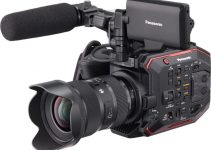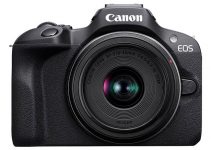Any time a new Mac is released there is a wave of people saying “You can build a better PC for less!” The latest Mac Pro is one of the most criticized, especially with its eye-watering pricing scheme.
How exactly would a current Mac Pro hold up against a custom-built PC running some of the latest components?
Max Yuryev on the Max Tech YouTube channel put together one of those Threadripper PCs for $5,000 and compared it directly to a Mac Pro that costs $15,000.
Yuryev attempted to make the comparison as even as possible when it comes to components, but he does point out that it is nearly impossible to match them up.
For one, the Mac Pro runs macOS while the Threadripper can’t even be set up as a Hackintosh and must run Windows. Let’s take a look at what he did.
Right off the bat, Yuryev points out how the motherboard he needed brings tons of features and I/O that beat that Mac Pro before the other components are even added.
The Threadripper has Wi-Fi 6, PCIe 4.0, 10 USB-A ports with 7 supporting USB 3.2 Gen 2 speeds, and two USB-C ports and two Thunderbolt 3 ports. How does this compare? The Mac Pro only has Wi-Fi 5, PCIe 3.0, two USB-A ports with USB 3.2 Gen 1 speeds. It does win with Thunderbolt, as there are eight Thunderbolt 3 ports on the Mac Pro.
Other benefits of the PC are an expansion card that allows for creating a RAID with M.2 SSDs that can max out at 15,000 MB/s transfer speeds. That’s impressive. Also, since it is a standard PC you can more easily add in extra hard drives and storage when you need them.
As for a part by part comparison, the Threadripper PC has a 3.7 GHz 32-core AMD processor, 64GB DDR4 RAM, an NVIDIA RTX 2080 Ti graphics card with 11GB memory, a 1TB SSD, Thunderbolt 3 card, and a watercooler.
The Mac Pro was configured with a 3.3GHz 12-core Xeon processor, 192GB DDR4 RAM, an AMD Radeon Pro Vega II graphics card with 32GB memory, a 1TB SSD, and the Afterburner card. Also, just a reminder that the Mac Pro costs three times as much as the PC.
Let’s look at some numbers!
Geekbench scores are the standard for computer comparisons and it is a good place to start. The multi-core scores put the AMD 3970X Threadripper CPU in the PC at 26,037 compared to the 12,518 of the Mac Pro.
That’s a huge improvement. It is a more expensive CPU than the one in the Mac, but still, double the performance is totally worth it. Things even up with the single-core score, but it still manages to beat the Mac Pro by about 10%.
Cinebench is the real test for video editing and graphics. Again, the Threadripper and all its extra cores powered through with a score over three times better than the Mac Pro. Yuryev does point out that it did make the PC run extremely loud since all the fans needed to kick into gear.
The Mac barely even made noise, making it an area where Apple far exceeds any custom computer. Also, macOS seems to be faster and more responsive than Windows. There were also some app crashes on Windows. Apple also ran cooler by about 10 degrees, which can make an impact during longer sessions.
Graphics are where the story changes back to the PC’s advantages. With optimum settings, the Threadripper beat the Mac by about 50%. It also almost doubled the frame rate performance for the gaming test in the Unigine Heaven benchmark. The Mac’s card also ran hotter, though it was still nearly silent.
Storage speeds are important with massive video files, and this is, again, where the custom PC wins. Its SSD had read speeds up to nearly 5000 MB/s while the Mac only hit around 3000 MB/s.
The interesting tests come down to real-world examples. For photo exports in Lightroom the insanely fast Threadripper accomplished the task in 7 minutes 30 seconds and the Mac did it in 10 minutes 30 seconds. Not quite the performance improvement the benchmarks would have you believe, though it is still faster.
Yuryev also showed up a unique trick he used to get the PC to drive the Pro Display XDR. A special PCIe card uses multiple DisplayPort outputs to then generate the needed video formats up to 6K in HDR over Thunderbolt.
Software optimizations may make more of a difference than the actual components. In Premiere Pro, the Mac Pro was faster for regular 4K, likely thanks to Apple’s Metal API. HEVC exports were three times faster on the Mac because of the hardware encoding. Even 4K stabilization was faster.
Now, for Canon raw video, the Threadripper’s extra cores are able to get smoother playback performance than the Mac. Exports for raw were even faster.
Resolve has different optimizations than Premiere, so those results will be a little difference. The Resolve Candle test resulted in the exact same scores. Even denoising was matched up.
Resolve has plenty of under-the-hood tech that allows it to make the most of various GPU and CPU configs. One Apple-specific variable is the Afterburner card. If you are deep into ProRes then having a dedicated card handling the decoding of these videos can dramatically speed up your edits.
Of course, we can’t forget than the Mac Pro has a beautifully engineered case that keeps sound to an absolute minimum and can be configured with specialized components. The custom build also lacks support and is not as easy to set up.
If you are an independent filmmaker or editor, there are plenty of reasons to go with either option. For the most power for the money, you are gonna have to go custom. If you want something that just works and will definitely work with macOS then you’ll need to fork over some extra cash for a Mac Pro. You could also just build the world’s fastest Hackintosh. If you want to know more about this build, Yuryev put together a video specific to video editing with even more detail.
[source: Max Tech]
Order Links:
- Apple Mac Pro (B&H)
- Apple Pro Display XDR (B&H, Amazon)
- be quiet! Dark Base Pro 900 rev. 2 Full-Tower Case (B&H, Amazon)
- AMD Ryzen Threadripper 3970X Processor (B&H, Amazon)
- Enermax ELC-LTTRTO360-TBP LIQTECH 360 TR4 II CPUE Liquid Cooler (Amazon)
- Gigabyte TRX40 AORUS XTREME TRX4 XL-ATX Motherboard (B&H, Amazon)
- Gigabyte AORUS NVMe M.2 1TB SSD (Amazon)
- Gigabyte GC-Titan Ridge PCIe Component Card (Amazon)
- NVIDIA GeForce RTX 2080 Ti Graphics Cards (B&H)
- Cooler Master V750-750W Module Power Supply (Amazon)
Disclaimer: As an Amazon Associate partner and participant in B&H and Adorama Affiliate programmes, we earn a small comission from each purchase made through the affiliate links listed above at no additional cost to you.




